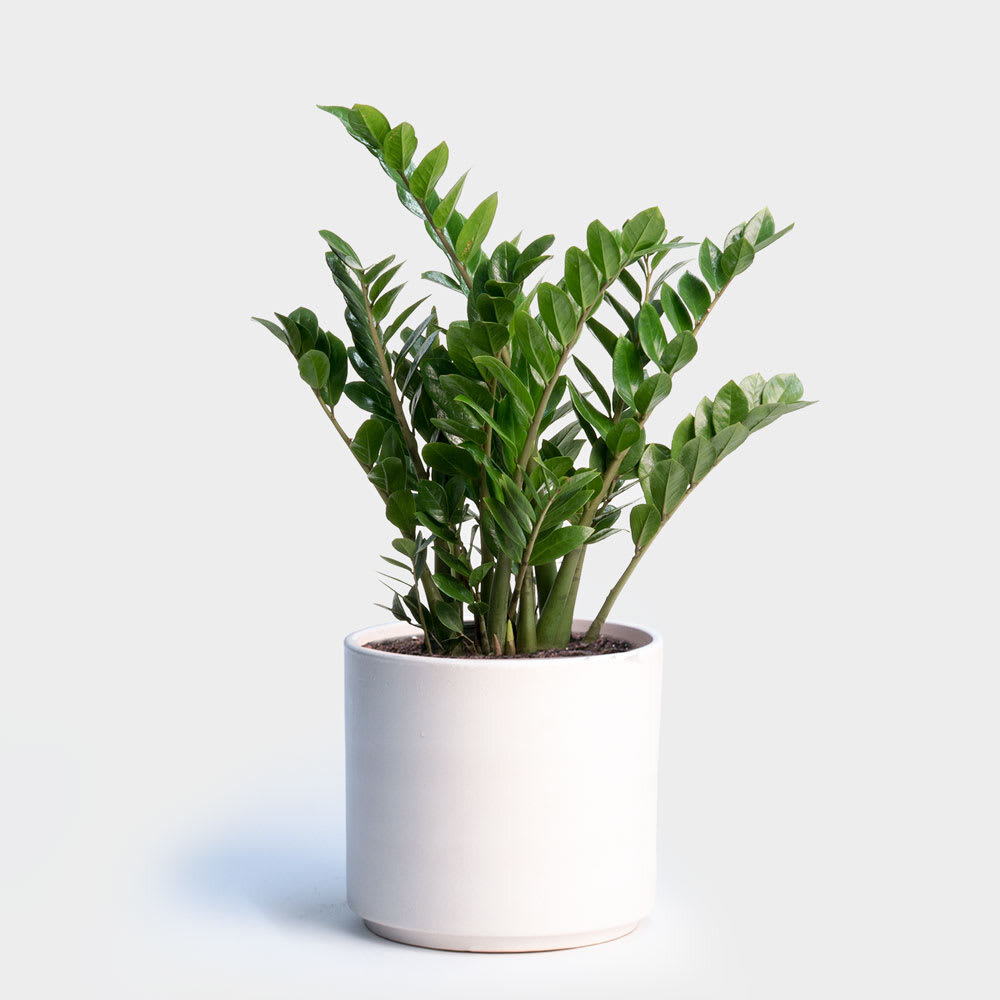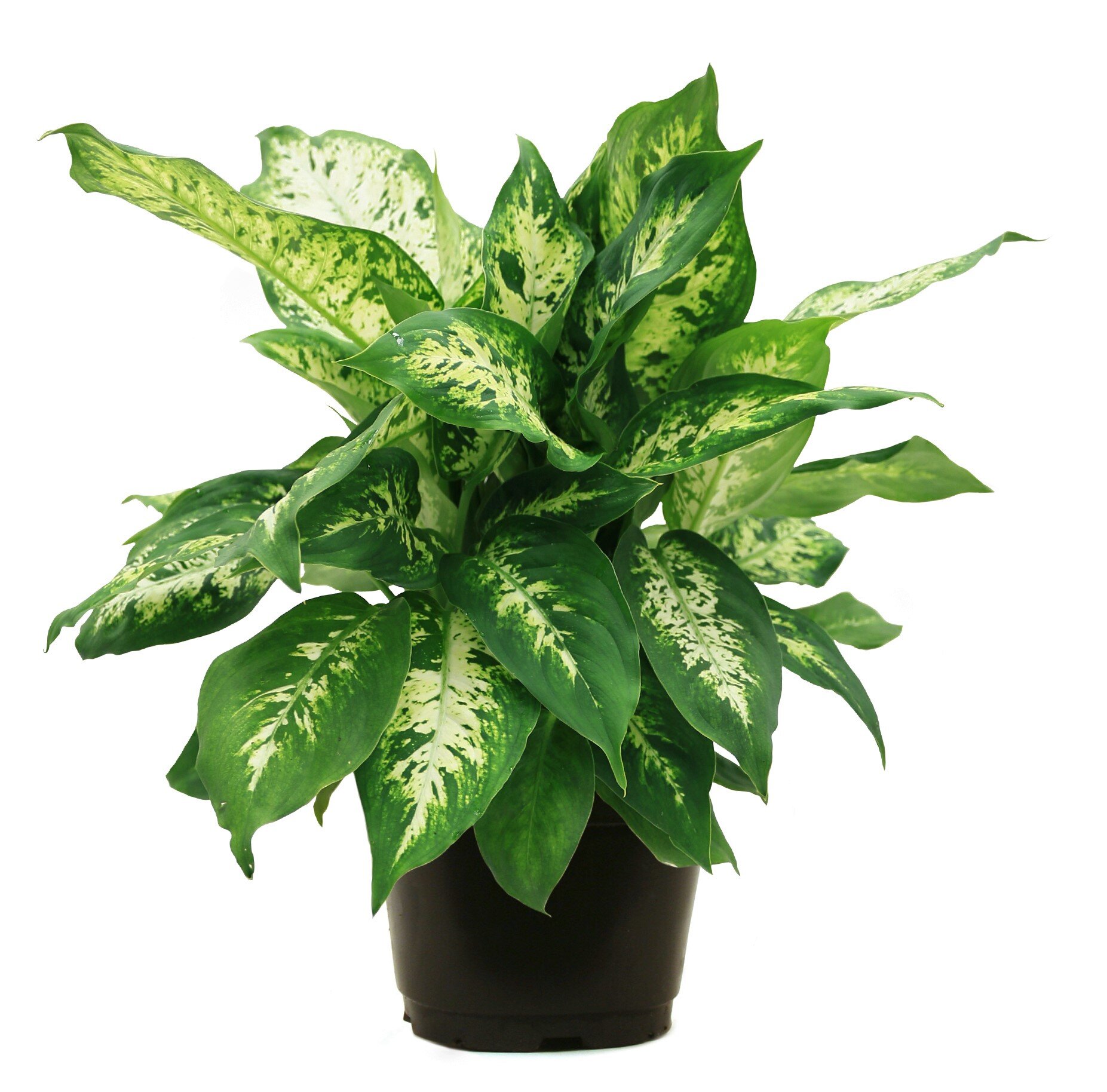Don't let curiosity kill the dog
We all know that at time pups can get a little overly curious and take out a plant or two…or three, I am writing this to make sure no houseplant will accidentally take out your pup.
I am in no way trying to discourage you from “jungleing” up your place with plants but rather inform you to the toxicity of some you can find a replacement or at least a proper placement in your house that will keep your fur buds safe and happy.
1- Alocasia Polly:
Alocasias are not the easiest houseplants, they are temperamental and require adequate light, water, and humidity, but their stunning leaves make them popular nonetheless.
Sadly, alocasias contains calcium oxalate crystals making them toxic to dogs, cats, and humans.
They can cause oral irritation, burning of the lips and mouth, swelling, vomiting, and difficulty swallowing and breathing if ingested.
Toxic Properties: Insoluble calcium oxalates
Severity: Moderate
Malicious Parts of the Plant: Leaves, Stems, and Roots
2 - Fiddle Leaf Fig
I know this one must hurt. Fiddle leaf figs have been my top selling plant now for well over a year and they are still my got to decorating plant to add a touch of boho vibe to any room.
But truth to be told the consumption of fiddle leaf figs can cause painful symptoms for your dog including skin and gastrointestinal irritation.
If your dog easily chews on things avoid bringing a fiddle leaf fig home unless you have a spot that is
unreachable to your pup.
Toxic Properties: Proteolytic enzyme, psoralen
3 - ZZ Plants
This is still one of my favorite plants ana very popular one as well because it can tolerate very low light making this a popular gift for both the home and the office, unfortunately ZZ plants are toxic to dogs, cats, and people if ingested and can cause oral burning, swelling, irritation, vomiting, excessive drooling, and difficulty breathing.
Toxic Properties: Insoluble calcium oxalates
Severity: Mild
Harmful parts of the plant: All parts of the plant
4 - Philodendron
Most common philodendron varieties include the heart-leaf philodendron, philodendron Brasil, Selloum philodendron, and Micans philodendron. They are harmless to the touch, but are toxic to both dogs and cats if ingested.
Symptoms of philodendron poisoning include oral irritation, swelling, vomiting, trouble breathing, and excessive drooling.
Toxic Properties: Insoluble calcium oxalates
Severity: Mild to Moderate
Harmful Parts of the Plant: All parts of the plant
5 - Peace Lily
It can be grown without direct sunlight and requires low care and maintenance. But peace lily contains calcium oxalates if it is chewed by your dog or cat mild clinical symptoms may occur.
Toxins: Insoluble calcium oxalates
Severity: Mild
Malicious Parts of the Plant: The whole plant
6 - Sago Palm
This exquisite plant sago palm is one of the favorites of landscapers. Usually, dogs don’t find it attractive, but if your dog is the exception and has a tendency to bite or chew just anything, then this plant can be dangerous. It contains a toxin called cycasin, which is known to cause liver damage. *Sago palm is also poisonous for cattle.
Toxins: Cycasin
Severity: Very high
Malicious Parts of the Plant: The whole plant
Symptoms: Vomiting, jaundice, increased thirst, hemorrhagic gastroenteritis, bruising, clotting disorder, liver damage, liver failure, and death.
7 - Arrowhead Plant
The plant contains calcium oxalate in its sap, which is harmful if contacted or ingested.
Toxins: Insoluble calcium oxalates
Severity: Moderate
Harmful parts of the plant: All parts of the plant
Symptoms: Vomiting, depression, diarrhea, lack of appetite, chills, change in the color of urine.
8 - Dieffenbachia
Often called dumb cane, it is one of the easiest houseplants you can grow in your home, however it is not safe for your dog nor cat.
Toxins: insoluble calcium oxalates, proteolytic enzyme
Severity: Moderate
Malicious Parts of the Plant: The whole plant
Symptoms: Mucous membrane irritation, intense burning, and irritation of the mouth and lips, tongue, excessive drooling, vomiting, difficulty in swallowing.
9 - Dracaena Fragrans
Commonly called cornstalk plant it is a very popular houseplant because it is very hardy however it is not pet safe.
Toxins: Saponins
Severity: Moderate
Malicious Parts of the Plant: The whole plant
Symptoms: Vomiting (sometimes with blood), depression, lack of appetite, drooling.
10- Birds Of Paradise:
Strelitzia, which is also called “bird of paradise” is an extraordinary ornamental plant native to South Africa. It is also grown as an indoor plant and for cut flowers but it comes in our list of poisonous houseplants for dogs as it contains Hydrogen Cyanide (prussic acid).
Toxins: Hydrogen Cyanide (Prussic Acid)
Severity: High
Malicious parts of plants: All Parts
Symptoms: Mild nausea, vomiting, drowsiness, difficulty in breathing, less appetite, death.















